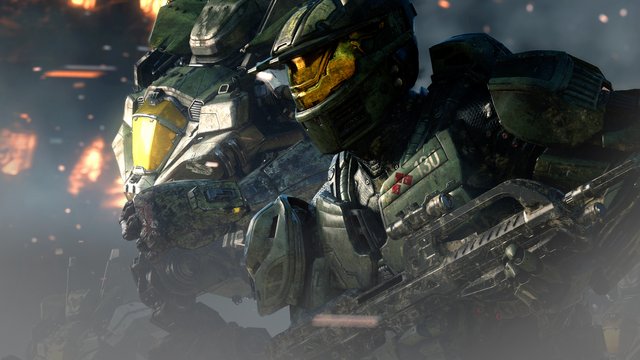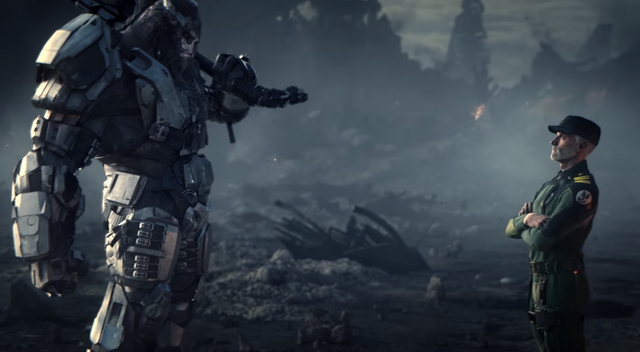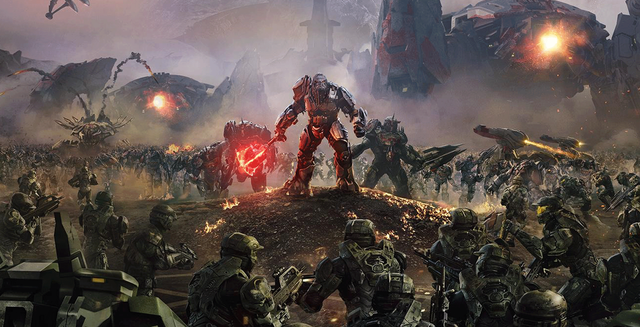
A solid PC user will always try to sell the argument that great game genres work best with mouse and keyboard, and it's not entirely wrong. Reactivity is higher, it falls more naturally, and for the most part it makes sense to be equipped with more control options. However, the consoles, and thereby the controller, can keep up with and have been able to do so for many years now. Most people prefer the simple, more centralized mode of control where you have everything in front of you in this one controller - you can easily play shooting games, that's no problem.
There is, however, one genre that can only be run through a mouse and a keyboard, a genre so advanced that it rarely crosses the barrier between PCs and consoles - the strategy game, or RTS in modern speech if one wants to. Many have tried to squeeze the complex management method down into the controller earlier, but most times it does not appear nearly complete, and several times these trials have just smelt in the oblivion. However, there is one example of a time when the hard work of transmitting the instantaneous tactical gameplay from a classic strategy game to the consoles has exceeded all expectations - Halo Wars.

Yes, for Halo Wars it just succeeded, and pampered with the deeply interesting Halo universe, played quickly a favorite among Xbox 360 players, and appears to be one of the few times where the strategy game and all the expectations that belong with it, worked and found a new identity on the consoles.
And now the sequel to us is Halo Wars 2, and this time it's the only Creative Assembly that has for years been the kings of the strategy race on PC with the Total War series behind. There appears to be something of a successor. The question is - can they do it again?
From the very first intersection, it becomes clear to the player that Creative Assembly not only wants to use their technical expertise to make Halo Wars 2 feel good with a controller, they also want to fire all the cylinders in the narrative department.
We are 28 years after the first Halo Wars. While Master Chief is on his epic mission, which we know as well from other Halo series chapters, the entire team is aboard The Spirit of Fire in deep deep cryo sleep. They wake up and find out that their ship is parked right in front of The Ark, the largest Forerunner installation in the galaxy, and better known as the place where all the Halo rings were constructed. A weak signal is the only sign of life they capture down from the Ark surface, and this wishes the Spirit of Fire team to investigate. From here begins a story that plays on all the narrative and dramatic tools that the Halo series is known for. The names and events of the gradually developed Halo universe are released in dialogues that are real world history, and this is a testament to the narrative strength of the universe.

However, there are tons of cliché to be found everywhere, and if you are tired of or have gone and become allergic to the Hollywood-embossed simplified dialogue and character development, you will undoubtedly roll your eyes several times through the game's campaign. Nevertheless, Halo Wars 2 is capable of creating a fantastic villain in the form of Atriox, a Brute at all, not at all a moving, thoughtless muscular bundle like the rest of his race, but is both clever, tactical and speculative. He is a formidable, fearsome character, stealing every scene he is in. When Atriox is on the screen, you are very pleased that the Halo Wars 2 medium scenes appear to be small short films between the game's missions, for he is the strongest character, no doubt. Likewise, Isabel, a strategic AI that the team finds on the Ark Surface, is a well-functioning solid character that gives a different and more fragile view of the relationship between soldiers and their AI companions, a theme that is ongoing throughout the series and that deservedly.
he game also has the same visual pomp and splendor as the ordinary, numbered chapters in the series. Particularly the intermediate scenes are visually spectacular, and are gradually some of the best in the Halo universe. On the ground it is clear that the strategy's overhanging isometric perspective must sacrifice some of the visual details that one would otherwise expect of a Halo game, but it is still a bit disturbing from time to time from a visual spectacular medium to a mission where The degree of detail has really been down. However, the Creative Assembly has retained what makes Halo the Halo, and once the laser rays fly over the ears of the soldiers, spaceships put troops off and everything explodes, it's hard to break over - the essence of the visual style of the series has been preserved and It is both in color setting and design.
The game also has the same visual pomp and splendor as the ordinary, numbered chapters in the series. Particularly the intermediate scenes are visually spectacular, and are gradually some of the best in the Halo universe. On the ground it is clear that the strategy's overhanging isometric perspective must sacrifice some of the visual details that one would otherwise expect of a Halo game, but it is still a bit disturbing from time to time from a visual spectacular medium to a mission where The degree of detail has really been down. However, the Creative Assembly has retained what makes Halo the Halo, and once the laser rays fly over the ears of the soldiers, spaceships put troops off and everything explodes, it's hard to break over - the essence of the visual style of the series has been preserved and It is both in color setting and design.

The most important thing in Halo Wars 2 is, however, what happens between the middle stages, that is, the game itself, and Creative Assembly has used the original game as a springboard, but has also made a number of additions. First and foremost, Halo Wars 2 is a true strategy game, and even though the game's main audience is on Xbox One, a console, it's not compromised on the complexity, the advanced structure and management that fans of the genre expect. In the campaign, you usually start setting up a base, and then it is about collecting resources, upgrading the base's various buildings, safeguarding defense measures and of course producing troops. Therefore, if you get acquainted with Halo Wars now, the game is like classic strategy games, and it is both structural and minute to minute. Move your troops, expand your base, overcome your opponent and wind. In addition, of course, there are a number of goals, such as defending certain points, or certain preconditions in specific lanes, for example, where you have to go without a base. Again, the structure is classic - players who just have as much touching either Starcraft or Warcraft know exactly how it takes place.
The problem that arises in this connection is therefore not about whether Halo Wars 2 works, because it really does. The problem is that in addition to functioning, both as strategy games and as Halo games, the structure, mechanics, appears to be a little too simplified. There is simply no opportunity for the same advanced strategic planning that fans of the genre expect, at least those on PC. Since the release of the first Halo Wars, the Total War series has pushed to the limits, Starcraft II has revolutionized the tactical depth and the Company of Heroes series has set new standards - much has been done and in addition to delivering a well-functioning strategy title on consoles, so Halo Wars 2 may seem a bit boring for comparison.
This also applies to the game's regular multiplayer, where the limitations are as clear as you play with and against others. However, there are three modes to choose from, different settings to pile and the ability to team up against other online opponents so content does not run out before. The big surprise, however, is Blitz, a new simulated multiplayer part, which rather plays on the simplistic console design rather than stabbing it like a bump on the leg. Here there is no basic building, because instead your devices will be shared via a card system. There are 12 cards per game and you can have four at hand at a time. Here are fewer pieces to move around with purely strategic, but using the right card at the right time is paramount, and thus Halo Wars 2 shines the most.

But despite Blitz, it's hard to do with Halo Wars 2, and it's a special PC where all of the above-mentioned fabulous RTS experiences are home, but of course there's the fact that Halo Wars 2 practically is the best strategy game on the Xbox One, but it is for fans of the series, and not necessarily for fans of the genre. The thing is that Halo Wars 2 works well, and with a durable history, solid mechanics and acceptable graphics, Creative Assembly has managed to build on the foundation laid in the first chapter of the series. Unfortunately, at the same time, mentioning that you are coming straight from strategically clever giants, Halo Wars 2 is also simplistic, simple and sometimes also somewhat bland. Now you are warned.
Don't forget to upvote, resteem and follow me for more content.

post is good but no image credits.
Downvoting a post can decrease pending rewards and make it less visible. Common reasons:
Submit